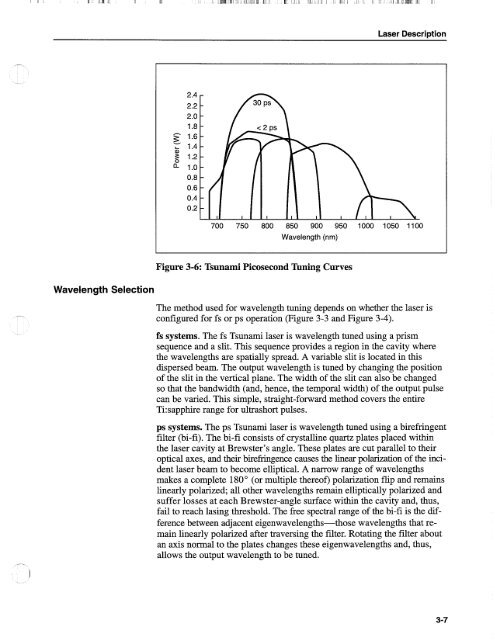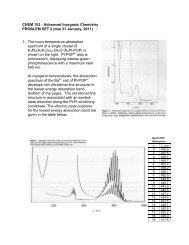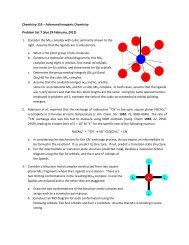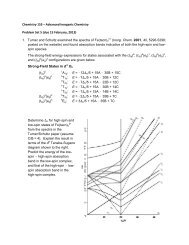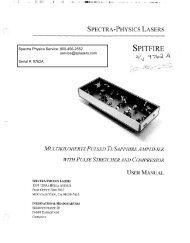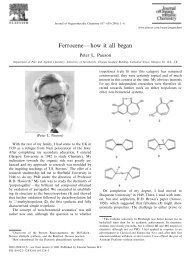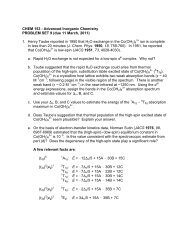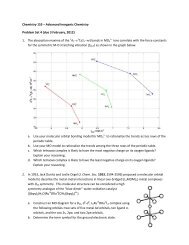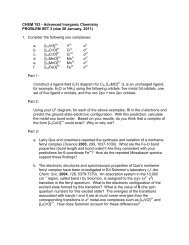Tsunami - Beckman Institute Laser Resource Center
Tsunami - Beckman Institute Laser Resource Center
Tsunami - Beckman Institute Laser Resource Center
You also want an ePaper? Increase the reach of your titles
YUMPU automatically turns print PDFs into web optimized ePapers that Google loves.
<strong>Laser</strong> Description<br />
2.4 -<br />
2.2 -<br />
2.0 -<br />
1.8 -<br />
g 1.6-<br />
- 1.4-<br />
z<br />
g 1.2-<br />
a 1.0-<br />
0.8 -<br />
0.6 -<br />
0.4 -<br />
0.2 -<br />
700 750 800 850 900 950 1000 1050 1100<br />
Wavelength (nm)<br />
Figure 3-6: <strong>Tsunami</strong> Picosecond Tuning Curves<br />
Wavelength Selection<br />
The method used for wavelength tuning depends on whether the laser is<br />
configured for fs or ps operation (Figure 3-3 and Figure 3-4).<br />
fs systems. The fs <strong>Tsunami</strong> laser is wavelength tuned using a prism<br />
sequence and a slit. This sequence provides a region in the cavity where<br />
the wavelengths are spatially spread. A variable slit is located in this<br />
dispersed beam. The output wavelength is tuned by changing the position<br />
of the slit in the vertical plane. The width of the slit can also be changed<br />
so that the bandwidth (and, hence, the temporal width) of the output pulse<br />
can be varied. This simple, straight-forward method covers the entire<br />
Ti:sapphire range for ultrashort pulses.<br />
ps systems. The ps <strong>Tsunami</strong> laser is wavelength tuned using a birefringent<br />
filter (bi-fi). The bi-fi consists of crystalline quartz plates placed within<br />
the laser cavity at Brewster's angle. These plates are cut parallel to their<br />
optical axes, and their birefringence causes the linear polarization of the incident<br />
laser beam to become elliptical. A narrow range of wavelengths<br />
makes a complete 180" (or multiple thereof) polarization flip and remains<br />
linearly polarized; all other wavelengths remain elliptically polarized and<br />
suffer losses at each Brewster-angle surface within the cavity and, thus,<br />
fail to reach lasing threshold. The fiee spectral range of the bi-fi is the difference<br />
between adjacent eigenwavelengths-those wavelengths that remain<br />
linearly polarized after traversing the filter. Rotating the filter about<br />
an axis normal to the plates changes these eigenwavelengths and, thus,<br />
allows the output wavelength to be tuned.


